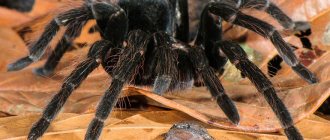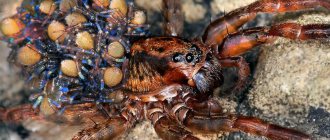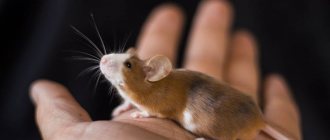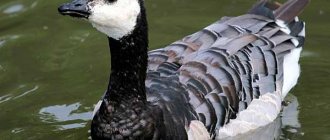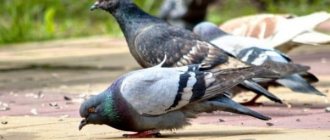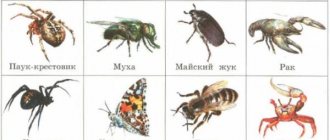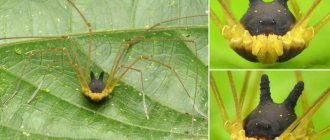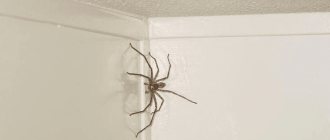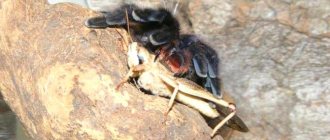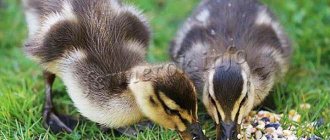Spiders belong to the order of arthropods that are voracious. They do not pose a danger to people and pets, do not cause harm, and do not cause problems. On the contrary, these creatures are of great use in the apartment; they catch midges, mosquitoes, flies, bedbugs, and cockroaches.
They are predators by nature, so insects form the basis of their diet. An exception is the horse that lives in the countries of Central America; it prefers to eat the green part of the acacia. But it is still worthwhile to carefully familiarize yourself with the feeding habits of these creatures.
What do spiders eat in the apartment?
Many people like to breed various exotic creatures in their apartments, which include house spiders. They belong to the species Tegenaria Domestica.
And in order for them to feel comfortable and develop normally, it is important to first consider the main features of the content.
When studying what domestic spiders eat in an apartment, it is worth noting that their diet is practically no different from the menu of their wild relatives. The owners often feed them with insects, scale insects, snails, caterpillars, small vertebrates, reptiles, and amphibians. But large animals are fed with small rodents.
House spiders that enter through windows, doors, and cracks eat the following insects:
- cockroaches;
- mole;
- moth caterpillars;
- midges;
- mosquitoes;
- fruit flies;
- butterflies;
- os;
- bees
Often many arachnids are found in apartments with complete unsanitary conditions and the presence of many pests. Small spiders eat all living creatures that may live in the apartment.
Nutrition depends on the size of the insect. For example, small predators are able to eat fruit flies, caterpillars, and mosquitoes.
Medium-sized inhabitants can only feed on insects - they catch flies, bees, and wasps. If a large victim gets caught in the web, the spider unravels it and releases it. He does the same with bedbugs, because they emit an unpleasant odor.
Internal structure of arachnids
The respiratory system of the cross spider is represented by pulmonary sacs and trachea. The pulmonary sacs and trachea of arachnids open outwards with special openings on the lateral parts of the segments. The pulmonary sacs contain numerous leaf-shaped folds in which blood capillaries pass.
The trachea is a system of branched tubes that connect directly to all organs where tissue gas exchange takes place.
The circulatory system of arachnids consists of a heart located on the dorsal side of the abdomen and a vessel through which blood moves from the heart to the front of the body. Since the circulatory system is not closed, blood returns to the heart from the mixed body cavity (mixocoel), where it washes the lung sacs and trachea and is enriched with oxygen.
- Maned wolf
- Nettle
- Elk
- 100 facts about bears
- Jungle animals
- Saber-toothed tiger
The excretory system of the cross spider consists of several pairs of tubes (Malpighian vessels) located in the body cavity. Of these, waste products enter the posterior intestine.
The nervous system of arachnids is characterized by the fusion of nerve ganglia with each other. In spiders, the entire nerve chain merges into one cephalothoracic ganglion. The organ of touch is the hairs covering the limbs. The organ of vision is 4 pairs of simple eyes.
Nutrition method
Many people are interested in how spiders eat insects, small vertebrates and other creatures, or rather, how they catch the prey and what they then do with it. Arachnids are known to weave webs from spider webs, which they use for fishing. The predator itself sits on the central area of the net and waits until it catches an insect. But he determines its presence by the vibration or vibration of the web.
Some species of predators do not spin webs; they explore the surrounding area, wait, and then attack. Others may weave not nets, but funnels near a hole or shelter.
The behavior of predators may differ - some can envelop the prey in a web and wait until it stops moving, others attack it immediately. But initially, a toxic substance is injected into the trapped insect.
Spider nutrition has some features:
- they lack complete digestive organs. The food is digested from the outside, after which the insect absorbs the liquid mass through the mouth.
- Carnivores have no teeth in the oral cavity. They grind food using chelicerae, pedipalps similar to tentacles.
- Some spiders can only suck up liquid food, others crush the shell and bite through the skin.
- Digestion of amphibians and rodents takes longer. The predator eats a mouse, frog, or snake gradually, it turns the victim over, constantly injecting a new portion of saliva.
Diet in the natural environment
Spiders are classified as obligate predators, whose menu includes exclusively small vertebrates and insects . Arachnologists mention the only exception - Bagheera kiplingi, a jumping spider living in Central America.
Upon closer examination, Kipling's Bagheera is not 100% vegetarian: during the dry season, this spider (for lack of Vachellia acacia foliage and nectar) devours its relatives. In general, the ratio of plant and animal food in the diet of Bagheera kiplingi looks like 90% to 10%.
Hunting methods
They depend on the lifestyle, sedentary or nomadic. A wandering spider usually lies in wait for its victim or carefully creeps up to it, overtaking it with one or two or three jumps. Nomadic spiders prefer to envelop prey with their threads.
Sedentary spiders do not run after the victim, but wait until it wanders into a skillfully woven net. These can be either simple signal threads or sophisticated (large in area) networks stretched to the observation post of their owner.
This is interesting! Not all hunters entangle their victims with webs: some (for example, Tegenaria Domestica) simply wait for the insect’s body to soften to the desired condition. Sometimes the spider releases its prey. This happens in two cases: if it is too large or has a strong smell (bug).
The spider kills prey with a toxin concentrated in poisonous glands, which are located in the chelicerae or (as in Araneomorphae) in the cephalothorax cavity.
The spiral muscles surrounding the glands contract at the right moment, and the poison reaches its destination through a hole at the tip of the claw-like jaws. Small insects die almost immediately, while larger ones continue to convulse for some time.
Hunting objects
For the most part, these are insects of suitable size. Spiders that weave nets more often catch all flying creatures, especially dipterans.
The species “assortment” of living creatures is determined by habitat and season. Spiders that live in burrows and on the soil surface eat mainly beetles and orthoptera, not disdaining, however, snails and earthworms. Spiders from the family Mimetidae target spiders of other species and ants.
Argyroneta, a water spider, specializes in aquatic insect larvae, fish fry and crustaceans. Spiders from the genus Dolomedes, which inhabit wet meadows and swamps, eat approximately the same thing (small fish, larvae and tadpoles).
The most interesting “dishes” are included in the menu of tarantula spiders:
- small birds;
- small rodents;
- arachnids;
- insects;
- fish;
- amphibians.
Young snakes often appear on the table of the Brazilian tarantula Grammostola, which the spider devours in huge quantities.
Nutrition method
It has been proven that all arthropods demonstrate an arachnid (extraintestinal) type of nutrition. The spider has everything adapted for consuming liquid food, from the filtering device of the pre-oral cavity and pharynx, the narrowed esophagus and ending with a powerful sucking stomach.
Important! Having killed the victim, the spider tears and crushes it with its jaws, releasing digestive juice inside, designed to dissolve the insides of the insect.
At the same time, the spider sucks up the protruding liquid, alternating between eating and injecting juice. The spider does not forget to turn the corpse over, processing it from all sides until it turns into a dried mummy.
Spiders that attack insects with hard cover (for example, beetles) pierce their articular membrane with chelicerae, usually between the chest and head. Digestive juice is injected into this wound, and the softened contents are sucked out from there.
Return to content
What not to feed spiders
We have found out what spiders eat, but now it’s worth considering what food they should not give. Despite the fact that predators are omnivores, there is information that they can eat even small birds, but it is still worth taking a responsible approach to their diet.
It is not advisable to feed amphibians and rodents. Of course, they can consume these creatures, but health problems may arise afterwards. For example, after eating a small mouse or frog, your pet may experience indigestion and may eventually die.
Do not include domestic cockroaches in your spider's diet. These insects are nutritious and useful for predators, but there is still a chance that they are poisoned, and after the spider eats an insect with poison, it will quickly die or be sick for a long time. For this reason, you should not let your pet go hunting for this animal.
It is not recommended to use for feeding bugs that were caught on the street. The fact is that they can also be poisoned. Often, street dwellers carry dangerous diseases that can also affect spiders. If you are worried about your pet and do not want to lose it, you should not feed it this food.
If food supplies are depleted, and it is not possible to go to a pet store, then your pet can be fed with street insects. But they should be collected away from roads, preferably outside the city. Before feeding the creatures, you should carefully inspect and rinse.
You should not freeze them for future use, because some insects do not die when frozen, and the spider may not want to eat a stale product.
As for frogs, newborn mice, this food is difficult for spiders. They can use it for several days. During this time, it will have time to decompose in a warm terrarium and become filled with corpse poisons. Still, if you want to see how a predator will deal with an animal, you should make sure that it is healthy, and its size should not be larger than a spider.
It is not recommended to give your pets other predatory insects - scolopendras, mantises, and other spiders. They can attack your pet, and in the end it will not be clear who will act as food - the victim or the spider.
Preparing feed yourself
You can prepare food for your beloved pet yourself. This saves money and time for frequent trips to the pet store. It is not difficult to breed marbled cockroaches, which are a delicacy for spiders in their regular diet. You can grow a colony of cockroaches in a glass jar. You need to throw bark and cardboard at the bottom of the container and put 10-20 individuals there. Marbled cockroaches reproduce quickly and are not picky about food. You can feed them vegetable scraps, bread crumbs and small pieces of meat.
To prevent cockroaches from escaping, you should coat the edges of the jar with Vaseline. When selecting food for a spider’s diet, it is better to collect young cockroaches that have not yet acquired wings. Such victims are suitable for both an adult spider and a small growing pet.
Important tips for feeding spiders:
- You cannot leave the corpse of an insect in the terrarium if decomposition has occurred. Corpse poisons are extremely harmful to your pet.
- Feeding the spider immediately after molting is not advisable. Insects can harm a spider that has just survived its molt.
- It is necessary to immediately remove the remains of the spider's meal.
- It is not advisable to freeze food for further use. Many spiders will simply refuse stale food.
- If the insect turns out to be larger than the spider, you should cut it into pieces.
- If the spider refuses to eat, you need to crush the insect's head with a stone and leave it in the terrarium for a couple of hours. If more than 8 hours have passed and the spider has not touched the food, be sure to remove the corpse.
The key to a long and happy life for your pet is taking care of its diet. Myths that tarantulas should eat only vertebrates cannot be believed. Listening, or rather looking closely at the state of the spider, you need to feed it according to need, and under no circumstances overfeed it. Moderate nutrition, care for the cleanliness of the terrarium and frequent replacement of drinking water are to the taste of all domestic spiders on the planet.
How often should you feed a spider?
Due to the fact that the spider feeds slowly, its meal can last for several days; it is not fed often. Adults kept at home must be fed once every 7-10 days, young animals – 2 times a week. Before breeding, the frequency of feeding is increased.
Sometimes there are individuals that are unable to tame their appetite. This is a dangerous phenomenon that can lead not to obesity, but to rupture of the abdomen, which causes inevitable death.
The degree of satiety of the pet should be determined by the owner. If his belly is 2-3 times enlarged, then he needs to be driven away from the prey. It would be better to remove her remains from the terrarium.
Where do spiders go in winter?
Arthropods adapt to the onset of cold weather in different ways. Spiders are unable to tolerate temperatures below 0 degrees due to tissue crystallization. Depending on this, spiders can sleep or die in winter.
Young cross spiders and “newborn” wasp spiders migrate on wind-blown spider webs in search of habitat on warm September days. Huddled in a crack in the bark of a tree, spiders sleep in winter.
Sexually mature parents of baby wasps end their life in the summer: the male - in the form of a “wife” dinner after mating, the female - after laying eggs. A similar situation occurs in adult crosses. Autumn is the mating season, when males go in search of females sitting in their web. After fertilization of the female, the male dies. The spider weaves a cocoon in which it lays eggs. Having hidden it in a secluded place (in the bark of trees, cracks in masonry), it also dies. In the spring, spiderlings emerge from the eggs, ready to weave webs.
Males and females of black widows do not survive until the cold weather. At the end of June, mating occurs, after which the female eats the “suitor”. Having laid up to 130 eggs in prepared cocoons, she hides them in lairs (mouse holes, crevices) entwined with dense cobwebs and dies. Spiders appear in September and live in a cocoon until April, eating each other. With the onset of stable heat, they go outside.
As for the species of black widows, spiders that were born in September spend the winter with them. In a warm cocoon left by a caring spider mother, they sleep until April. Spreading in search of habitats, they have arachnoid and venom-carrying apparatus. During mating at the end of June, the female karakurt eats the male. After laying eggs it dies.
Domestic arthropods may go into torpor with the onset of winter if the number of indoor parasites decreases sharply. Waking up before the onset of spring, they can feed on their relatives.
Rare species live in burrows and crevices
Predatory arthropods, whose life cycle exceeds a year, fall into torpor with the onset of cold weather. Species such as tarantulas live in the wild for 5 to 10 years. Helping them survive is the ability to go without food for a long time and the mild climate in their habitats. With the onset of cold weather, they burrow into their vertical burrows and hibernate until spring.
The edge hunter has a life expectancy of 2 years, until the age of mating. After breeding, they die in August. Immature individuals spend two winters in the mother's cocoon, attached to the grass on the shore, in a state of torpor.
Silverback spiders build their winter cocoons underwater
During the cold season, when rivers and lakes are frozen, the silverfish prepares winter housing. The spider controls the volume of the bell and the oxygen content in it. The air supply in such a cocoon is enough for 4-5 months. Nearby, the silverfish weaves the second and third mesh networks and fills them with air. This insurance allows you to overwinter without rising to the surface until warm days arrive.
Hiding in a mollusk shell
If there is no algae and nowhere to go, the water spider can use an abandoned mollusk shell instead of a cocoon. He fills it with air bubbles from the surface and covers it with thick nets instead of curtains. Such a house serves as reliable protection from large fish and crayfish.
They overwinter with young offspring (the female is eaten in the spring)
The black fathead spends its winter in a special way. With the onset of autumn, the mating period approaches, and the males go in search of females. Having carried out the necessary fertilization ritual, the male remains to live in the same burrow with the female. The fathead spider makes a cocoon for its offspring, where it soon lays eggs.
For 2 months, spiders guard the clutch in a cocoon. With the onset of spring, spiders appear. Spiders serve as food for them. By the end of summer there are 3 molts. Young spiders crawl out of their holes to find a home. After 2 moults they will become sexually mature and will look for a female. A male spider, whose life cycle is less than a year, dies by this time.
Portion sizes for feeding spiders
When feeding spiders, you need to consider the serving size. It should not exceed 1/3 of the predator’s body volume. The insect that is used for food should be 1.5-2 times less than the length of the spider's body.
A large dinner can be very frightening for a young individual, she will experience fear and stress. And she is unlikely to be able to handle a large portion. But still, some owners do not pay attention to this; they give their pets an insect that may be larger than them.
If the spider is hungry and in an aggressive mood, then it will quickly deal with the victim. But in a well-fed predator, such a volume of food will cause great fear.
External structure and nutrition of arachnids
In spiders, the body segments merge to form the cephalothorax and abdomen, separated by an interception.
The body of arachnids is covered with a chitinized cuticle and underlying tissue (hypodermis), which has a cellular structure. Its derivatives are arachnoid and poisonous glands. The venom glands of the cross spider are located at the base of the upper jaws.
A distinctive feature of arachnids is the presence of six pairs of limbs . Of these, the first two pairs - the upper jaws and the tentacles - are adapted for capturing and grinding food. The remaining four pairs perform the functions of movement - these are walking legs.
During embryonic development, a large number of limbs are formed on the abdomen, but later they are transformed into arachnoid warts , opening by the ducts of the arachnoid glands. Hardening in air, the secretions of these glands turn into spider threads, from which the spider builds a trapping network.
After the insect has fallen into the net, the spider envelops it in a web, plunges the claws of its upper jaws into it and injects poison. Then he leaves his prey and hides in cover. The secretion of the poisonous glands not only kills insects, but acts as digestive juice. After about an hour, the spider returns to its prey and sucks out the semi-liquid, partially digested food. From a killed insect, only one chitinous cover remains.
The spider is inseparable from the web
Many are sure that a spider does not exist without a web, but not all species weave one.
These amazingly strong networks are a way of obtaining food. Spiders use webs to catch insects. However, some species hunt easier. Wolf spiders, for example, burrow into the ground. They use stones and weave funnels from spider webs for insulation in winter. They openly pursue prey.
Tarantulas also hunt on their own and shoot webs to stay on surfaces they slide off. Philodromid spiders feign death to obtain prey.
Spiders can be found almost everywhere
Due to their diversity, spiders live in all regions of the planet, with the exception of the polar regions. Moreover, unlike most wild animals, they are not at all embarrassed by the proximity of people. Rather, it’s the other way around: because flies, mosquitoes, and midges love to crowd around human habitation, be it a secluded hut in the forest or a skyscraper in the center of a metropolis. So, no matter where you live, you cannot avoid meeting spiders.
Interesting classification
Everyone knows that there are lovers of large tarantula spiders who classify their favorites depending on their speed characteristics. For example:
- For Dummies" . These are slow-moving members of this species that many people like to film. They can sit quietly on the palm of a person and move extremely slowly.
- For the “advanced” . These arthropods move quite quickly, so it’s unlikely to be captured on video.
- For professionals . They move so quickly that it is unlikely to notice in which direction the arthropod disappeared.
If we take into account such speed characteristics, it is not difficult to imagine how many species humanity does not yet know about.
Spider - description, characteristics and photographs
The body of arachnids consists of two parts:
- The cephalothorax is covered with a shell of chitin, with four pairs of long jointed legs. In addition to them, there is a pair of claws (pedipalps), used by mature individuals for mating, and a pair of short limbs with poisonous hooks - chelicerae. They are part of the oral apparatus. The number of eyes in spiders ranges from 2 to 8.
- Abdomen with breathing holes located on it and six arachnoid warts for weaving webs.
The size of spiders, depending on the species, ranges from 0.4 mm to 10 cm, and the span of their limbs can exceed 25 cm.
The coloring and pattern on individuals of different species depend on the structural structure of the integument of scales and hairs, as well as the presence and localization of various pigments. Therefore, spiders can have both dull, monochromatic and bright colors of various shades.
Tarantulas can shoot poisonous needles
Tarantulas are large spiders covered in hairs, which make them even more repulsive to humans. There are many legends about deadly tarantula bites, but they are not true: tarantulas are not very aggressive creatures and will not bite unless they are attacked, and their bite, although painful, is no more unpleasant or dangerous than a wasp sting . But tarantulas have another, much more terrible weapon. If you show aggression towards it, it turns its belly towards the source of danger and shoots a bunch of poisonous hairs in its direction - thin as threads and sharp as needles. Digging into the victim's skin, these hairs cause severe irritation. The only way to quickly get rid of them is to use duct tape as an emergency hair removal strip.
Interesting facts about spiders
- According to statistics, 6% of the world's population suffers from arachnophobia - the fear of spiders. Particularly sensitive people panic when they see a spider in a photo or on TV.
- Frightening-looking spiders - tarantulas, with a paw span of up to 17 cm, are actually calm and non-aggressive, thanks to which they have earned the reputation of popular pets. However, owners must protect their pets from stress, otherwise the spider sheds its bright hairs, which cause an allergic reaction in humans.
- The most poisonous spiders are considered to be black widows, their variety is karakurt, as well as Brazilian soldier spiders. The venom of these spiders, containing powerful neurotoxins, instantly attacks the victim's lymphatic system, which in most cases leads to cardiac arrest.
- Many people mistakenly believe that tarantula venom is fatal to humans. In reality, a tarantura bite causes only a slight swelling, similar to a wasp sting.
- Wall crab spiders, named Selenopidae in Latin after the Greek goddess of the Moon, move sideways as well as backwards.
- Jumping spiders are excellent jumpers, especially over long distances. As a safety net, the spider attaches a silk web thread to the landing site. In addition, this type of spider can climb glass.
- When chasing prey, some species of spiders can run almost 2 km in 1 hour without stopping.
- Fishing spiders have the ability to glide across water like water striders.
- Most species of spiders have an individual form of woven web. House (funnel) spiders weave funnel-shaped webs; dictine weaver spiders are characterized by angular webs. The web of Nicodam spiders looks like a sheet of paper.
- Lynx spiders are distinguished by a property that is uncharacteristic of spiders: to protect the clutch, females spit on the threat of poison, although this poison does not pose a danger to humans.
- Female wolf spiders are very caring mothers. Until the children gain independence, the mother “carries” the cubs on herself. Sometimes there are so many spiders that only its 8 eyes remain open on the spider’s body.
- The New Zealand cellar spider was immortalized in cinema thanks to director Peter Jackson, who used this species as the prototype for the spider Shelob.
- Very beautiful flower spiders lie in wait for prey on flowers, and adult females, as a camouflage, change their color depending on the color of the petals.
- The history of mankind is closely intertwined with the image of the spider, which is reflected in many cultures, mythology and art. Each nation has its own traditions, legends and signs associated with spiders. Spiders are even mentioned in the Bible.
- In symbolism, the spider personifies deceit and immeasurable patience, and the spider’s venom is considered a curse that brings misfortune and death.
Video
Scientists milk spiders for venom
The study of spider venom is required both for the development of antidotes and for other scientific experiments. Therefore, scientists keep spiders in laboratories and periodically milk them to obtain a valuable substance. But milking a spider is not so easy - much more difficult than, for example, a snake. To receive a dose of venom, the spider is hit with a weak electric current. But that's not all. After such an electric shock, spiders often vomit, and poison spoiled by spider vomit is not suitable for experiments. Therefore, scientists have to either carefully dose the shock, or clean the spider's mouth of vomit, and only then extract the poison. This process is very dangerous and lengthy: to obtain 100 grams of poison, the procedure must be repeated from 50 to 100 thousand times.
Myth 7. Spiders have stingers on their bellies.
Image: Elena Taranenko / Unsplash
The giant spider Shelob in Tolkien’s “The Lord of the Rings” was equipped with exactly this. She stung Frodo in the neck with it, causing him to temporarily fall into a coma.
The writer was bitten by a tarantula as a child and eventually developed arachnophobia. Apparently, this is why he collected the most disgusting features in Shelob - a sting, a “stalked neck”, eyes hanging in clusters.
But the author apparently confused the spider with a wasp: these arthropods do not have stingers at the end of their bodies. They bite exclusively with the chelicerae, that is, with the mouth. On their tail, however, are M. Pechmann. Patterning mechanisms and morphological diversity of spider appendages and their importance for spider evolution / Arthropod Structure & Development. And in some species they are quite large and can look like an extra pair of legs. But they do not emit poison - only cobwebs.
The biggest spider on the planet runs damn fast
Until 2001, the goliath tarantula was considered the largest spider in the world. But in 2001, in the jungles of Laos, scientists discovered an even larger species, called the “giant huntsman spider.” Its length exceeds 30 centimeters! In addition to its size, it is known for its incredible speed: thanks to its long legs, it runs much faster than ordinary spiders. He is not overly aggressive, but if he decides that you are attacking him, he will not run away, but instead will move towards you (running!) or jump from the ceiling onto your shoulders. Most likely, the impressions received from such an attack will haunt you for the rest of your life.
Myth 10. Harvesters are poisonous, but have no fangs.
Image: Thomas Henkel / Wikimedia Commons
There is another everyday myth. Allegedly, haymakers, or mowing spiders - well, those spiders with disproportionately long legs that you probably met at the dacha - are incredibly poisonous. But they cannot harm anyone because their jaws are too short. Or, in some variants, no mouth at all.
This is wrong. Haymakers do not have MR Berenbaum. The Earwig's Tail: A Modern Bestiary of Multi‑legged Legends poisonous glands, and their chelicerae are not hollow, but grasping fangs. They can hunt small insects, but do not pose a danger to people. And even if they wanted to, they wouldn’t even be able to bite through the skin.
Tarantula venom will kill you
Tarantulas have earned themselves a bad reputation. Of course, you don’t want to wake up with such a friend in the same bed. However, they are often demonized. If you are bitten by a tarantula, you will be in pain and may have an allergic reaction, but that's about it.
Tarantula venom is not considered dangerous, according to the National Institutes of Health. The danger is a possible allergic reaction. In serious cases, even cardiac arrest is possible. However, for most people, bee venom poses a great danger.
These spiders feed at night, so tourists with tents can rest easy. Tarantulas choose insects, but can feed on mice, frogs and even small birds. But not by people. They grab the prey with their paws and immobilize it with poison. Tarantulas secrete enzymes that allow them to dissolve the bodies of their prey before sucking out the fluids.
Funnel web spider can bite off a person's fingernail
Funnel-web water spiders are native to Australia, which is famous for its many dangerous animal species. They are sometimes called “leg crippling spiders”—and for good reason. The size of a tarantula, these spiders are highly aggressive, especially during mating season. During this time, they run around their territory in search of females and viciously attack anything that does not resemble a spider, including human legs. Funnel web spiders have powerful jaws that bite into flesh with such force that they can easily bite through or even bite off a person's toenail. They do not want to let go of their victim, so the victim has to literally tear the aggressor away from himself. So if you're thinking about a trip to Australia, don't plan it during spider mating season!
A spider is capable of eating prey several times larger than itself
Typically, spiders prefer small game, such as flies or mosquitoes. But usually the spider's net is much larger than is required to catch such game, and because of its strength, quite large creatures - birds, bats, snakes and lizards - sometimes become entangled in it. In this case, the spider does not get lost - it wraps the unexpected prey in the web more tightly, diligently pumps it with poison, and then begins to eat it - slowly and with pleasure.
Types of spiders, names and photographs
Scientists have described more than 42,000 species of spiders. About 2,900 varieties are known in the CIS countries. Let's consider several varieties:
- Blue-green tarantula (Chromatopelma cyaneopubescens)
one of the most spectacular and beautifully colored spiders. The tarantula's abdomen is red-orange, its limbs are bright blue, and its carapace is green. The size of the tarantula is 6-7 cm, with a leg span of up to 15 cm. The spider’s homeland is Venezuela, but this spider is found in Asian countries and on the African continent. Despite belonging to tarantulas, this type of spider does not bite, but only throws special hairs located on the abdomen, and only in case of severe danger. The hairs are not dangerous for humans, but they cause minor burns on the skin, similar in effect to nettle burns. Surprisingly, female chromatopelma are long-lived compared to males: the lifespan of a female spider is 10-12 years, while males live only 2-3 years.
- Flower spider (Misumena vatia)
belongs to the family of side-walking spiders (Thomisidae). Color varies from completely white to bright lemon, pink or greenish. Male spiders are small, 4-5 mm long, females reach sizes of 1-1.2 cm. The species of flower spiders is distributed throughout European territory (excluding Iceland), and is found in the USA, Japan, and Alaska. The spider lives in open areas with an abundance of flowering herbs, as it feeds on the juices of butterflies and bees caught in its “embraces.”
- Grammostola Pulchra
a type of tarantula spider that naturally lives only in Uruguay and the southern regions of Brazil. A rather massive spider, reaching a size of 8-11 cm, with a dark color and a characteristic “metallic” sheen of hairs. In nature, it prefers to live among the roots of plants, but almost never digs its own burrows. Pulhra often becomes a pet among connoisseurs of exotic pets.
- Argiope bruennichi or spider wasp (Argiope bruennichi)
a spider with an unusual coloring of the body and limbs - yellow, black and white stripes, for which it received its name. True, the male wasp spiders are not so bright, and they are smaller in size than the females: the “young ladies” reach a size of 2.5 cm, and together with the legs - 4 cm, but the male rarely grows more than 7 mm in length. The species is widespread in Europe, Asia and southern Russia, the Volga region and North Africa. The Argiope spider lives in meadows with an abundance of grass, on the edges of forests. The web of the argiope is very strong, so it is difficult to tear it, it will only stretch under pressure.
- Huntsman (Dolomedes fimbriatus)
widespread on the Eurasian continent and found along the shores of bodies of water with standing or very slowly flowing water. Often settles in swampy meadows, shady forests or gardens with high humidity. The body length of the female edge hunter varies from 14 to 22 mm, the male is smaller and rarely larger than 13 mm. The color of spiders of this species is usually yellowish-brown or almost black, with light yellow or white stripes on the sides of the abdomen.
- Apulian tarantula (Lycosa tarantula)
a species of spider belonging to the wolf spider family (lat. Lycosidae). It lives in the vast expanses of Southern Europe: it is often found in Italy and Spain, and digs burrows half a meter deep in Portugal. The size of the tarantula is impressive - up to 7 cm in length, individuals are usually colored red, less often - brown, the body has several light-colored transverse stripes and one longitudinal one.
- Spiny orb-weaving spider or "horned spider" (Gasteracantha cancriformis)
distributed in the tropics and subtropics, in the southern part of the USA, Central America, the Philippines, and Australia. The size of the female is 5-9 mm, the width reaches 10-13 mm. Males are 2-3 mm long. The legs of the spiny spider are short, and there are 6 spines along the edges of the abdomen. The color of the spider is very bright: white, yellow, red, black. On the abdomen there is a pattern of black dots.
- Peacock spider (Maratus volans)
This spider comes in all sorts of colors: red, blue, light blue, green, yellow. The coloring of females is paler. An adult reaches a size of 4-5 mm. Males attract females with their beautiful outfit. The peacock spider lives in Australia - in Queensland and New South Wales.
- Smiling spider (Theridion grallator)
or a spider with a happy face is completely harmless to humans. This unusual spider lives in the Hawaiian Islands. Its body length is 5 mm. The color of the spider can be varied - pale, yellow, orange, blue. This species feeds on small midges, and the bright color of the individual helps confuse enemies, especially birds.
- Black widow (Latrodectus mactans)
This is a very dangerous and poisonous species of spider. It lives in Australia, North America, and is also found in Russia. The size of females reaches 1 cm, males are much smaller. The body of the black widow is black, and on the abdomen there is a characteristic red spot in the shape of an hourglass. Males are brown with white stripes. A black widow's bite is deadly.
- Karakurt (Latrodectus tredecimguttatus)
This is a type of deadly poisonous spider from the black widow genus. The female karakurt has a size of 10-20 mm, the male is much smaller and has a size of 4-7 mm. There are 13 red spots on the abdomen of this scary spider. In some varieties, the spots have borders. Some mature individuals are devoid of spots and have a completely black shiny body. The karakurt lives in Kyrgyzstan, the Astrakhan region, the countries of Central Asia, southern Russia, Ukraine, the Black Sea and Azov regions, southern Europe, and North Africa. Karakurt was also spotted in the Saratov region, Volgograd region, Orenburg region, Kurgan region, and in the south of the Urals.
Myth 8. Spiders lay eggs in people
Fragment of the film "The Mist"
A girl is lying on the beach and suddenly feels that a spider has bitten her on the face or neck. The next morning she looks in the mirror and is horrified to see a brood of spiderlings crawling out of an abscess on her cheek. It's creepy, isn't it?
This is one of B. Klintberg's most popular urban legends. Legends and Rumors about Spiders and Snakes / Fabula in the West, which is reflected in cinema - remember the film “The Mist”. However, this story is repeated here too.
As with the belly stinger, spiders are again given an ability that in reality is possessed by completely different creatures.
Arthropods are unable to Myth: Spiders can lay their eggs under human skin in wounds created by their bites / Burke Museum. This is what gadflies and other two-winged parasitic flies do. Their larvae, emerging from boils on the host’s body, are called myiases D. Otranto. The immunology of myiasis: parasite survival and host defense strategies / Trends in Parasitology. You can Google it, but this show is not for the faint of heart.
Eight-legged monsters, who are blamed for all sins, in this case are themselves victims. So, some wasps lay their eggs in them, and the hatching larvae kill and devour the spiders.
Some peoples eat spiders
In Cambodia, Thailand and Venezuela, spiders are considered a delicacy. To eat, take large spiders, carefully clean off the hair from them (control yourself), sprinkle generously with sugar, salt and monosodium glutamate and fry in oil until the legs are completely hard. Don't forget to write down the recipe!
Where do spiders live?
Spiders live everywhere and are distributed in all corners of the globe. They do not live only in areas where the surface of the earth is hidden under an ice shell all year round. The number of species in countries with humid and hot climates is greater than in temperate or cold ones. With the exception of a few species, spiders are ground dwellers and live in built nests or burrows, being active at night.
Tarantula spiders and other species of mygalomorph spiders live in the crowns of equatorial trees and shrubs. “Drought-resistant” species of spiders prefer burrows, ground crevices and any shelter at ground level. For example, digger spiders (atypical tarantulas) live in colonies, settled in individual burrows located at a depth of up to 50 cm.
Some species of mygalomorph spiders close their burrows with special flaps made from soil, vegetation and silk.
Haymaking spiders (long-legged spiders) love to live in damp, dark caves, abandoned animal dens, cellars and old barns. In residential buildings, centipedes are found hanging upside down on warm, southern windows.
Jumping spiders live in a wide variety of places: in forests, deserts, mountains, and also build webs on stone and brick walls of houses.
Karakurts live on the banks of artificial irrigation canals, on the slopes of rocky ravines, as well as in wormwood fields and wastelands, where they are often mercilessly trampled by flocks of sheep and pigs.
Sidewalk spiders (crab spiders) spend most of their lives sitting on flowers waiting for prey, although some members of the family can be found on tree bark or forest floors.
Representatives of the family of funnel-web spiders place their webs on tall grass and bush branches.
Wolf spiders prefer damp, grassy meadows and swampy wooded areas, where they are found in abundance among fallen leaves.
The water (silver) spider builds a nest underwater, attaching it to various bottom objects with the help of webs. He fills his nest with oxygen and uses it as a diving bell.
Water spider Argyroneta aquatica building a nest
